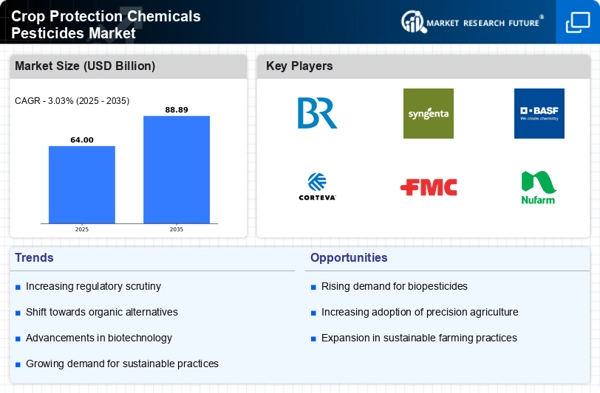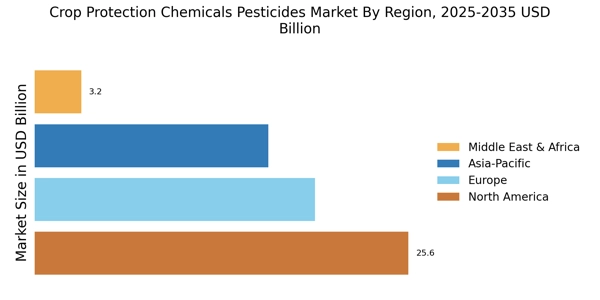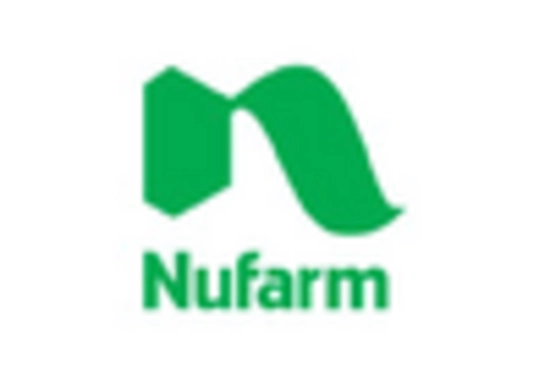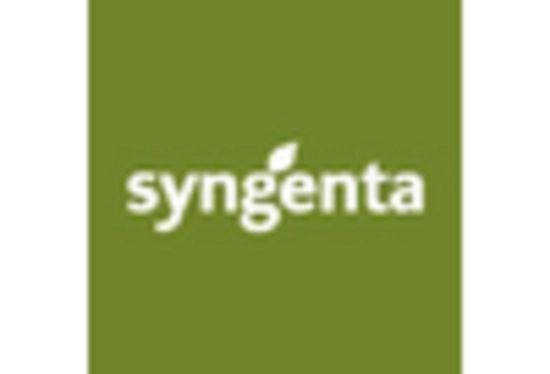Increasing Food Demand
The rising global population and changing dietary preferences are driving the need for increased agricultural productivity. As the demand for food escalates, farmers are compelled to enhance crop yields, which often necessitates the use of Crop Protection Chemicals Pesticides Market products. According to recent data, the agricultural sector is projected to grow significantly, with crop production needing to increase by approximately 70% by 2050 to meet food requirements. This trend underscores the critical role that pesticides play in ensuring food security, as they help mitigate losses from pests and diseases, thereby supporting sustainable agricultural practices.
Advancements in Biotechnology
The integration of biotechnology in agriculture is transforming the Crop Protection Chemicals Pesticides Market. Innovations such as genetically modified organisms (GMOs) are designed to be more resistant to pests and diseases, reducing the reliance on traditional pesticides. This shift not only enhances crop resilience but also aligns with the growing consumer demand for sustainable farming practices. The market for biopesticides, a subset of the pesticides market, is expected to witness substantial growth, with projections indicating a compound annual growth rate (CAGR) of over 15% in the coming years. Such advancements are likely to reshape the competitive landscape of the industry.
Rising Awareness of Pest Resistance
The growing awareness of pest resistance among farmers is driving the demand for effective crop protection solutions within the Crop Protection Chemicals Pesticides Market. As pests evolve and develop resistance to conventional pesticides, there is an increasing need for innovative and diverse pest management strategies. This awareness prompts farmers to seek out new formulations and products that can effectively combat resistant pest populations. The market is responding to this challenge by developing integrated pest management solutions that combine chemical and non-chemical methods, thereby enhancing the efficacy of pest control measures. This trend is likely to shape future product offerings in the industry.
Climate Change Impact on Agriculture
Climate change is significantly influencing agricultural practices, thereby affecting the Crop Protection Chemicals Pesticides Market. Altered weather patterns, such as increased rainfall and temperature fluctuations, can lead to the proliferation of pests and diseases, necessitating the use of effective crop protection measures. Farmers are increasingly recognizing the need to adapt their pest management strategies to cope with these changes. This adaptation may involve the use of more resilient crop varieties and targeted pesticide applications. As climate-related challenges continue to escalate, the demand for innovative crop protection solutions is expected to rise, presenting opportunities for growth within the industry.
Regulatory Support for Sustainable Practices
Regulatory frameworks are increasingly favoring sustainable agricultural practices, which is positively impacting the Crop Protection Chemicals Pesticides Market. Governments are implementing policies that encourage the use of environmentally friendly pesticides and promote integrated pest management (IPM) strategies. This regulatory support is crucial as it not only helps in reducing the environmental footprint of agriculture but also fosters innovation in pesticide development. The market is witnessing a shift towards products that comply with stringent regulations, which may lead to a more sustainable and responsible approach to crop protection. As a result, companies that adapt to these regulations are likely to gain a competitive edge.


















Leave a Comment